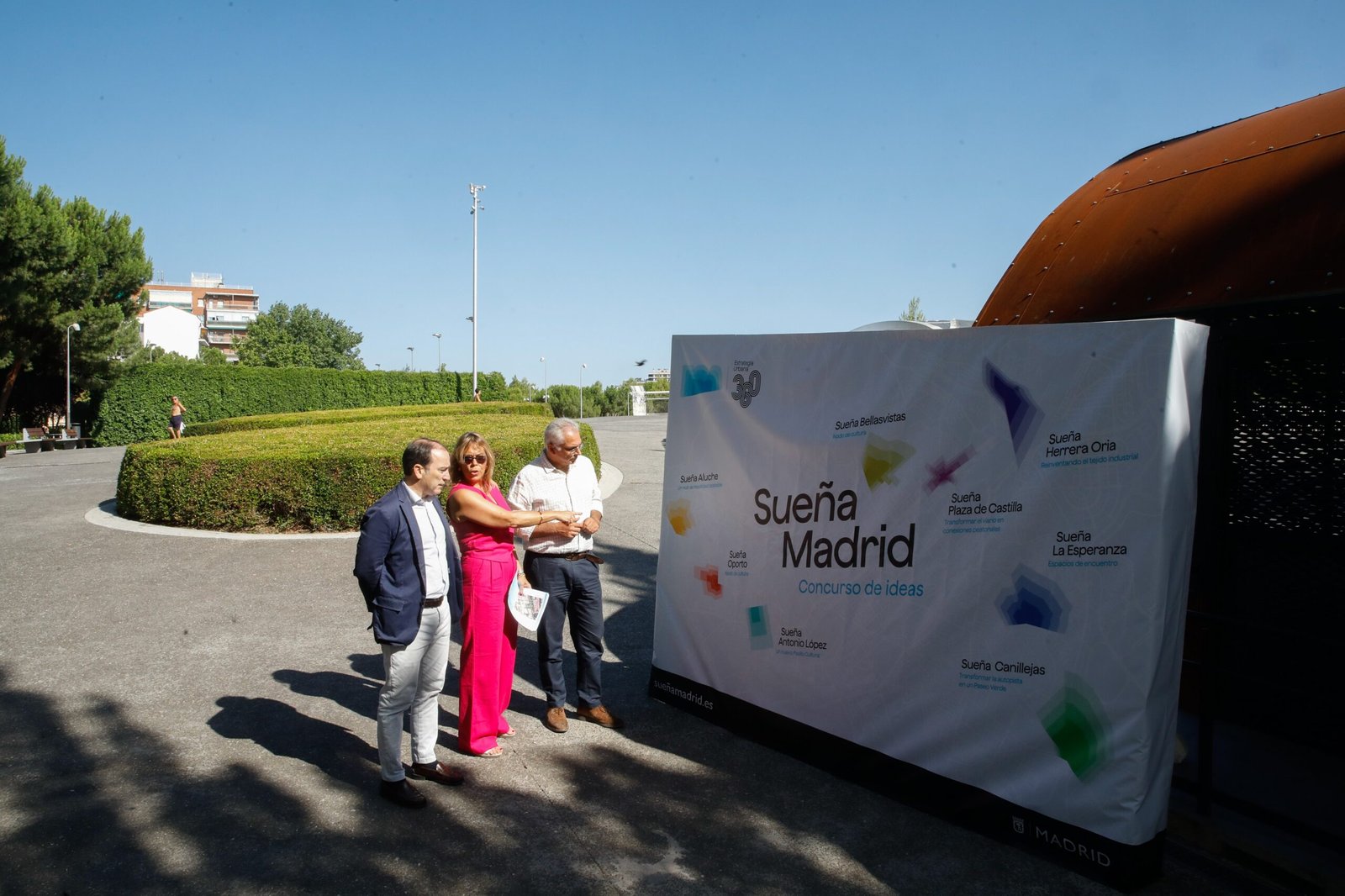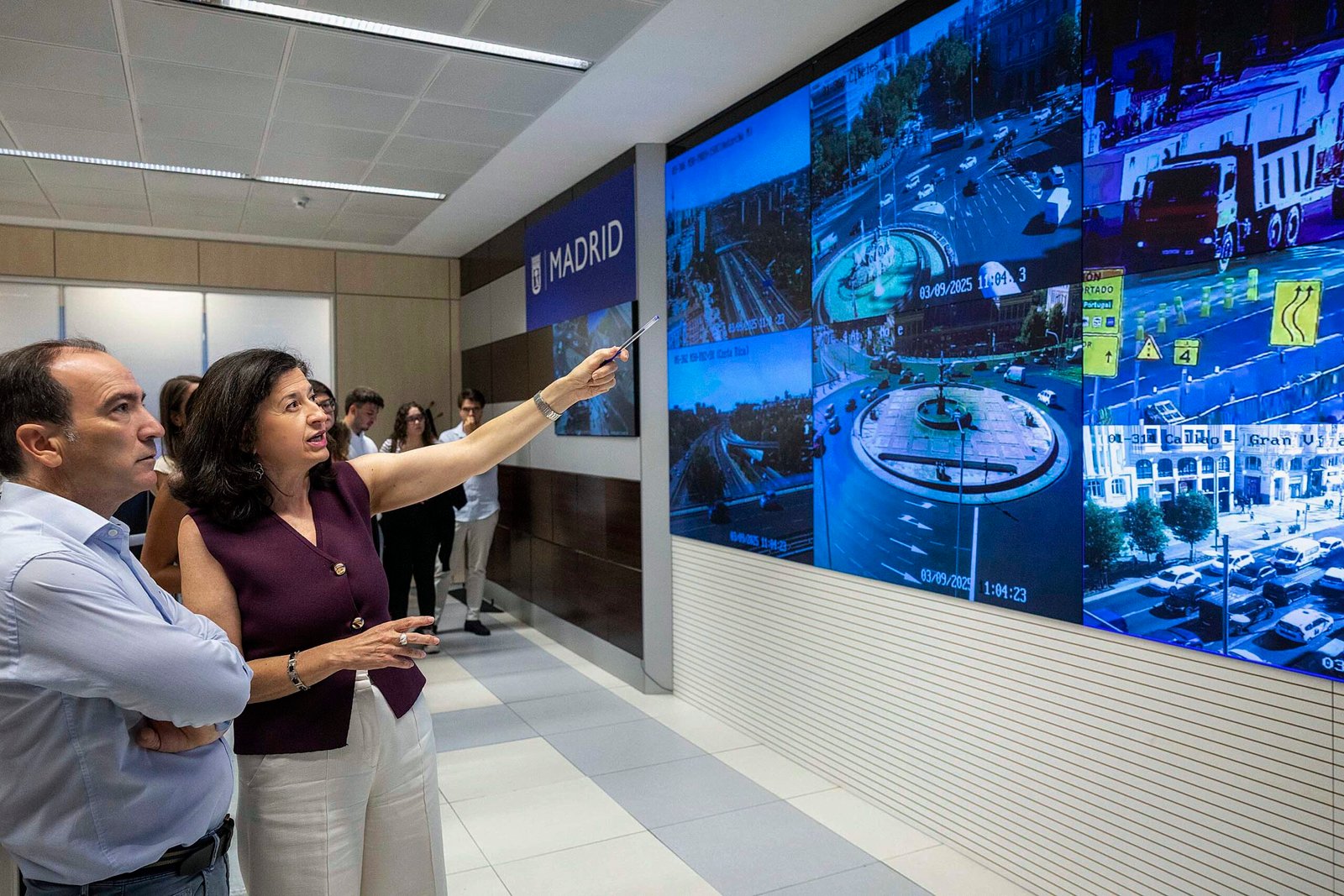The delegate of Urbanism, Environment and Mobility, Borja Carabante, presented this morning the ‘Dream Madrid 2025’ ideas competition, aimed at promoting participation in the development process of the Urban Strategy 360 through the definition of specific proposals for the transformation of eight points in the capital. This competition is primarily aimed at students and young professionals in the field of urban design and will award the best proposals after their selection by a jury, based on their quality, innovative nature, and ability to creatively and comprehensively address the city’s main challenges. The ideas must combine all of this with the specific characteristics of each proposed location and develop a design tailored to the needs of that environment.
Carabante launched this ideas competition precisely from one of the eight selected locations: the plot located at number 27 Calle Antonio López, in Carabanchel, at the foot of Madrid Río. Accompanied by the district councilor, Carlos Izquierdo, the delegate detailed that the other seven points chosen for participants in the competition to make their proposals are Oporto Square (Carabanchel), Aluche Interchange (Latina), Herrera Oria Avenue-industrial estate of Fuencarral (Fuencarral-El Pardo), the surroundings of the Canillejas junction (Hortaleza, Barajas, and San Blas-Canillejas), La Esperanza Colony (Hortaleza), Castilla Square (Chamartín), and the southwest area of the Bellas Vistas neighborhood (Tetuán). The three best proposals will be awarded a first prize of €3,000, a second prize of €2,000, and a third prize of €1,000. The winners will present their proposal at an institutional event organized by the City Council, and a selection of the best ideas will shape an exhibition.
These eight locations that make up the ‘Dream Madrid 2025’ competition were chosen by the Urban Strategy 360 Office based on a strategic analysis that took into account the high potential for urban transformation and the ability to address the main challenges of the city represented by these spaces. Each of these areas, explained Carabante, «represents a unique opportunity to rethink public space, improve sustainable mobility, promote social cohesion, and revitalize the local economic and cultural fabric.»
The selection was based on a qualitative diagnosis that identified areas with urgent regeneration needs, urban fragmentation, or underutilized infrastructure, as well as their potential to become nodes of innovation, encounter, and sustainability. This diversity of contexts will provide the City Council with ideas that will stir the debate on how to address urban challenges ranging from energy rehabilitation to the integration of historical heritage.
Eight examples for urban transformation
- Dream Oporto, cultural hub (area of 43,022 m2 and population of 6,854 people, Carabanchel): proposals must take into account the need to protect local commerce, revitalize the place as an economic, cultural, lively, and flexible space, as well as adapt uses for innovative activities and talent attraction, with local cultural industries as a factor driving this transformation.
- Dream Antonio López, a new cultural corridor (area of 8,465 m², on the plot at number 27, Carabanchel): the goal here is to create a new pedestrian structuring axis between Carabanchel and Arganzuela and promote the natural heritage of the Manzanares River and the architectural heritage of the Arganzuela Bridge, all while improving sustainability and mobility.
- Dream Aluche, a sustainable mobility hub (area of 68,954 m² with general and local systems, sports facilities, and green areas, Latina): ideas for the interchange environment should include objectives such as revitalizing the place as a hub of centrality and connection, strengthening and connectivity of the green infrastructure, and creating an innovative and digital transport hub, through the reinvention of the space into a key, connected, accessible, and multimodal interchange.
- Dream Herrera Oria-Fuencarral industrial estate, reinventing the industrial fabric (area of 325,455 m² and population of 1,735 people in land designated for mixed uses -industrial, tertiary, and residential-, Fuencarral-El Pardo): the aim is for proposals to consolidate this environment as a flexible activity hub capable of attracting innovation and generating new economic focal points, taking into account respect for the existing industrial heritage and technology and digitalization as cross-cutting axes.
- Dream Canillejas, transforming the highway into a green promenade (area of 640,658 m² and population of 2,088 residents in land designated for tertiary and residential uses, Hortaleza, San Blas-Canillejas, and Barajas): the Palomas neighborhood has the potential to become a reference for urban transformation with ideas that include measures for sustainable mobility and improving public space, through the promotion of a new commercial corridor around the A-2, the recovery of spaces for pedestrians, its opening towards Juan Carlos I Park, and the transformation of the highway into a green promenade.
- Dream La Esperanza, meeting spaces (area of 301,844 m² and population of 7,912 people in land designated for residential use with an estimated 3,200 homes, Hortaleza): proposals sought for La Esperanza Colony should focus on densification around protected housing, the promotion of tertiary uses to revitalize the local economy, and action in inter-block spaces for the creation of meeting and community places.
- Dream Plaza de Castilla, reclaim your square and transform the roads into walkable connections (area of 49,976 m², in general transport systems, Chamartín): the competition in this emblematic space of the city is designed for ideas to incorporate solutions to reclaim the concept of a ‘square’ in the environment, reinventing the interchange and integrating it into a welcoming public space, improving its sustainability conditions, and recognizing its heritage by bringing the square closer to its monuments.
- Dream Bellas Vistas, a bridge to Neo-Mudejar Madrid (area of 111,825 m² and population of 8,278 people in land designated for residential use, Tetuán): the Arcos del Canal de Isabel II (Amaniel aqueduct) and Bellas Vistas have the potential to improve their urban integration and heritage revaluation, so ideas should include contributions in terms of planning public space and sustainable mobility to transform this area into a more habitable and connected environment.
Participants will have the opportunity to submit their proposals to the Urban Strategy 360 Office between September 1 and 30, 2025. Adults who have completed studies or are in the process of training in disciplines that impact urban design, planning, urbanism, and city transformation can participate individually or in teams of up to five people.
A process of unprecedented debate and dialogue
The delegate of Urbanism, Environment, and Mobility emphasized the importance of initiatives like this that align with the spirit with which the Madrid City Council is beginning the work on the Municipal Strategic Plan that will replace the 1997 General Urban Planning Plan and whose initial approval is scheduled for the first half of 2027.
In this regard, Carabante recalled that the municipal government has carried out an unprecedented process of dialogue and debate in these first two years of office for the development of this strategic plan, with the creation of an Urban Advisory Council, the establishment of nine thematic working groups that presented their conclusions last June – with the participation of 827 people and contributions from 176 entities, including companies, universities, and associations -, the signing of 41 agreements, and the activation of participation groups in the 21 districts.
In parallel to the work process of collaboration groups between the public administration, the private sector, and participation in the districts, the Government Board approved the contract for the provision of services for the development of the Municipal Strategic Plan. With a budget of €14 million, its implementation will allow the hiring of 38 specialists and technicians in urban planning, informatics, data management, and legal-economic fields. The contract also includes the promotion of participation, dissemination, and promotion of the project in line with the campaign’s objective, the Sueña Madrid website, which has collected a thousand citizen proposals in just three months, and the launch of the Strategic Simulator: a 100% digital tool for massive data analysis based on georeferencing and the application of artificial intelligence or machine learning. /
More information on the ‘Dream Madrid 2025’ ideas competition website.



